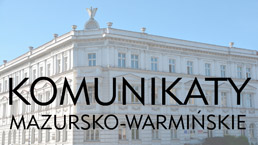Current issue
Online first
Special issues
Archive
About the Journal
Editorial Board
Editorial Council
Reviewers
Editorial guidelines
Publication ethics
Guidelines for reviewing
Remarks on “ghostwriting”
Copyrights and Open Access rule
GDPR Privacy Notice – for the authors of articles sent for publication in the "Komunikaty Mazursko-Warmińskie ("Masuro-Warmian Bulletin")
Contact
Price list
„Þæt is mid Estum þeaw þæt þærsceal ælces geðeodes man beon forbærned”.
What exactly Wulfstan said about the burning of the dead by Ester in the
fragment of his report on the trip to Truso? .
1
Muzeum Zamkowe w Malborku
Online publication date: 2015-12-15
Publication date: 2015-12-15
KMW 2015;290(4):557-578
KEYWORDS
Old English literatureWulfstan’s account of his voyage to Witland andTrusoWulfstan’s account editions and translationscremation of the deadarchaeological sources
TOPICS
ABSTRACT
In 1961 a part of Old English Orosius, the description of northernmost and central Europe, was
translated into Polish and edited by Gerard Labuda. The source contains two short travel accounts by Othere
and Wulfstan in the end of ninth century. The Polish editor did not avoid a number of linguistic mistakes
made during the translation. Moreover, this was issued without any syntactic and grammatical analysis of the
original Old English text. The Labuda’s edition only provides the Polish translation of the modern English
translation by the mid-nineteenth century English scholar Joseph Bosworth. This resulted in the wrong interpretation of some important information contained in it.
The subject of this paper is a one of the sentences included in the final fragment of the description of
the funeral rites among the Ests/the Old Prussians – „Þæt is mid Estum þeaw þæt þær sceal ælces geðeodes
man beon forbærned”.
My aim is to understand this passage of the OE text correctly by providing it’s linguistic and grammatical examination to see how it corresponds with the known or presumed historical circumstances of the time
and place. The interpretation of the old written source cannot be separated from its context, it this particular
case especially from the local archaeological context. This will be arguing in my paper.
At last,the above mentioned passage should be translated as:„And that is a custom among the Ests that
people of every nationality must be cremated there”. According to this custom, the dead body of every man,
that has passed away in the Witland, must be burned on the funeral pile. This Wulfstan’s description seems to
be strongly supported by the number of rich equipped graves of the foreigners discovered and archaeologically investigated at the number of early medieval cemeteries located in modern day city of Elbląg area and
dated to the VIII/IX/X/XI century.
We process personal data collected when visiting the website. The function of obtaining information about users and their behavior is carried out by voluntarily entered information in forms and saving cookies in end devices. Data, including cookies, are used to provide services, improve the user experience and to analyze the traffic in accordance with the Privacy policy. Data are also collected and processed by Google Analytics tool (more).
You can change cookies settings in your browser. Restricted use of cookies in the browser configuration may affect some functionalities of the website.
You can change cookies settings in your browser. Restricted use of cookies in the browser configuration may affect some functionalities of the website.




